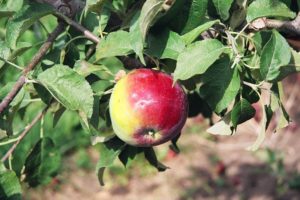Second best…no one likes the sound of that. Secondary nutrients have their name for a reason: plants need a little less of them than primary nutrients in fertilizer treatments. In fact, these nutrients are often overlooked when it comes to fertilizer treatments. However, secondary nutrients, including sulfur, calcium, and magnesium, are critical to plant development.
But – they’re still essential, because producers aren’t just looking for an average crop. Growing the best, healthiest, and largest yield is what nutrient programs are trying to achieve. In addition, it’s important to start preparing crops for success from the very beginning, at planting.
Let’s look at our options:
accesS
AgroLiquid’s access allows plants to absorb sulfur more efficiently, and it keeps more plant-usable sulfur in the soil. In addition, it uses a lower concentration of sulfur at lower rates, but it provides the same results compared to commodity fertilizers. This makes it an economical and environmentally responsible choice.
What happens if you’re deficient in sulfur?
Sulfur deficiency symptoms include yellowed leaves and stunted growth on young leaves. Nitrogen deficiency looks similar, but it shows on older leaves. Repeated application of other nutrients can create an imbalance in the soil and introduce a sulfur deficiency. Producers can use accesS to correct sulfur deficiencies at planting or anytime through the year.
Learn more about accesS and read the research.
LiberateCa
LiberateCa is designed to prevent or correct calcium deficiency for all types of crops. It’s effective in many different soil types and can be applied in many different ways. The versatile nature of this fertilizer makes it easy to prevent calcium deficiencies or correct them when signs appear. A healthy level of calcium in the soil improves soil quality and longevity long-term.
LiberateCa also has the unique ability to be safely combined with other AgroLiquid nutrient products, including phosphorus-containing products, which provides the versatility to apply calcium if needed throughout the growing season.
Read about LiberateCa.
CalSip
Of course, all crops need sulfur and calcium, but high-calcium crops like alfalfa, apples, cruciferous vegetables, cherries, and citrus fruits may need more.
CalSip restores and protects crops with two secondary nutrients – sulfur and calcium. CalSip can be used during planting or the growing season to first, prevent deficiencies and second, protect against them after they have happened.
What does a calcium deficiency look like?
Calcium can’t move freely throughout the plant where it’s needed. Calcium can also easily be lost in the soil, so it’s easy for crops and trees to become calcium deficient at varying growth stages. The new growth will look stunted, withered, or show signs of tip burn.
Since calcium plays an important role in fruit development, you may see premature blossom shedding and buds as well as water-soaked and discolored areas on fruits.
Learn about CalSip.
Magnesium
Without the proper amount of magnesium, crops can’t produce chlorophyll. Magnesium is also needed to help transfer and produce sugars, starches, fats, and oils.
How can you tell if you need magnesium?
Starchy vegetables, sugary fruits, and oil seeds will lose their shape and flavor. The yellowing of the leaves, particularly on the older, lower leaves appears. In time, it can move to the younger leaves too. Eventually, if it is severe, plants may have a red, purple, or brown tints.
AgroLiquid products containing magnesium include: microLink Manganese, Micro 1000
Read more about magnesium.
Learn about spotting deficiencies.
Starting from the beginning
Our agronomists are always happy to work through soil tests, tissue tests, and determining what deficiencies may be happening in your crops.
Though the nutrients may be secondary, they’re not second in priority. Starting your crops off right gives you the best chance for a successful growing season. Contact us to start the conversation.


